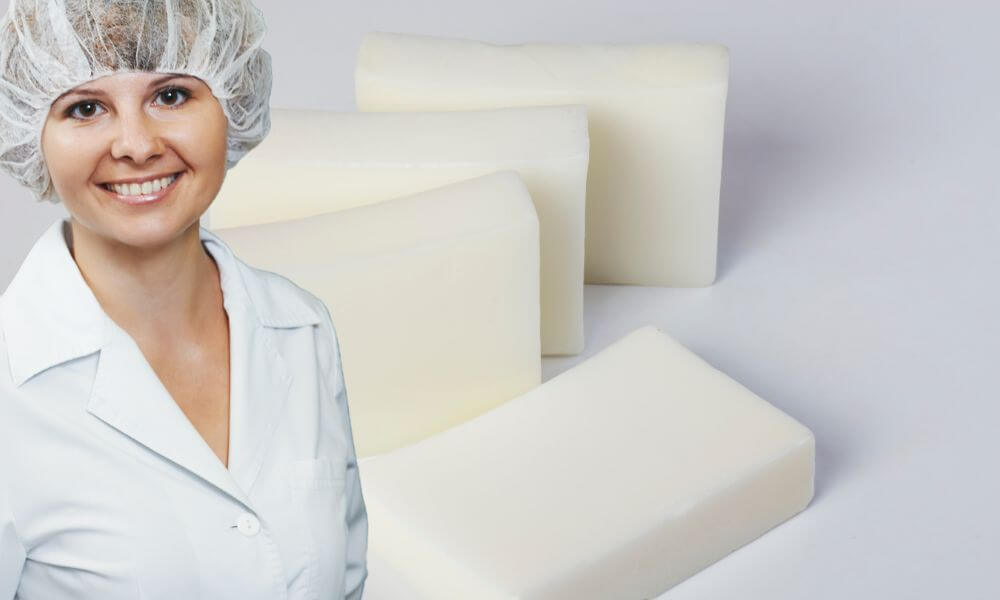I have been buying goat milk soap from the same online store for years.
After trying quite a few different ones, I finally found the one that is perfect for me.
It ticks all the boxes, does my skin wonders, and comes in my favorite fragrances.
However, my skincare routine has been struck a significant blow—the shop that sells it was forced to close down.
I don’t live anywhere with a lot of stores, and so if I can’t find the one I want online, I don’t have a lot of options.
I wondered how easy it would be to make my own.
So, how do you make goat milk soap?
You’ll start off by freezing the goat milk solid. Then it’s a process of mixing and combining the milk with oils, lye, lard and any additives and fragrances like lavender. The process isn’t that complicated, the most important thing is taking the steps in the right order.
There are, of course, a variety of ways to make soap of any kind.
The only real difference with goat milk soap is the main ingredient.
Soap ingredients do not always need to be frozen, but with goat milk, it is absolutely essential.
Let’s look further into this.

How is soap made?
Firstly, let’s take a broader view of how soap is made, generally.
This will give you an idea of what you need to do to make soap with goat milk, too.
Soap is made through a process called saponification.
In saponification, a lye base is mixed with oil, fat and lard or butter.
This creates a chemical reaction in which the oils turn into salts, creating the solid soap.
Most conventional soaps, then, are simply made with a combination of oils and fats, and any additives or fragrances wanted.
It may even be worth, for you, attempting to make some ordinary soap first.
It’s easy and you’ll use all the same ingredients as you will for goat milk soap.
Think of it as a practice run.
With all this said, let’s look at exactly how to make goat milk soap.
How is goat milk soap made?
First things first, for a DIY job, is always safety.
Make sure you work in a well-ventilated area, and you wear gloves and protection for your eyes.
If you can, doing this outdoors is best.
These are pretty harsh chemicals you’ll be working with.
Firstly, you’ll make the lye solution.
Mix sodium hydroxide with water and stir until it’s completely dissolved.
Do this on the hob—it will need to be kept warm.
Your goat milk should be frozen into separate cubes—not a single block.
Allow them to melt into the lye solution.
Then you will melt your solid fats and oils—butter or lard, or whatever you’re using.
Then you’ll add the liquid oils when the solids are melted.
Pour them in against a spoon or spatula—if you tip them straight in you stand a good chance of creating air bubbles.
These will cool down the solution.
Now, mix the oils with the lye.
Make sure they’re mixed together well, until it has the consistency of custard.
Once they’re mixed well, all you need to do is mold the soap and let it cool.
Put the mold in the refrigerator for 24 hours.
Then, take it out again, and cut it up, letting it cure for 3-5 days until it hardens.
How much goat milk does it take to make soap?
It will naturally depend on how much you’re going to want to make, but for a typical batch, you’re going to need at least 3.5 ounces of goat milk to make soap.
You need a certain amount of oils and fats to get the mixture to create soap at all, and so you’ll need a good amount of goat milk to match the minimum oils and fats.
Start off with 3.5 ounces, as this is just about the minimum.
After that, once you’ve gotten the hang of it, you can start using larger amounts if you want to make more at a time.
The thing about turning goat milk into soap is that, as long as you store it properly, it will really never go off.
You can make one big batch that will last for months and months.
Does goat milk soap base have lye?
Yes, it does.
Many wonder if it’s possible to make any kind of soap without a lye base, and the simple answer is no.
Soap as we understand it needs a lye base in order to work properly.
Goat milk soap is no different.
You can make it yourself without ever handling the lye, using a process known as melt-and-pour soap.
This has already been through saponification, so you just need to melt it and add your scents.
It has still used a lye, though.
You just didn’t have to handle it yourself.
So, the process of making goat milk is really much the same as making any other kind of soap.
The most important difference is that you make sure the goat milk is frozen solid before you begin, otherwise you will not get the desired effect.
Making soap is not exactly difficult, but it isn’t all that easy, either.
It might take you one or two attempts to get quality soap—and that’s okay!
It always takes an attempt or two to get to grips with a process like this.

